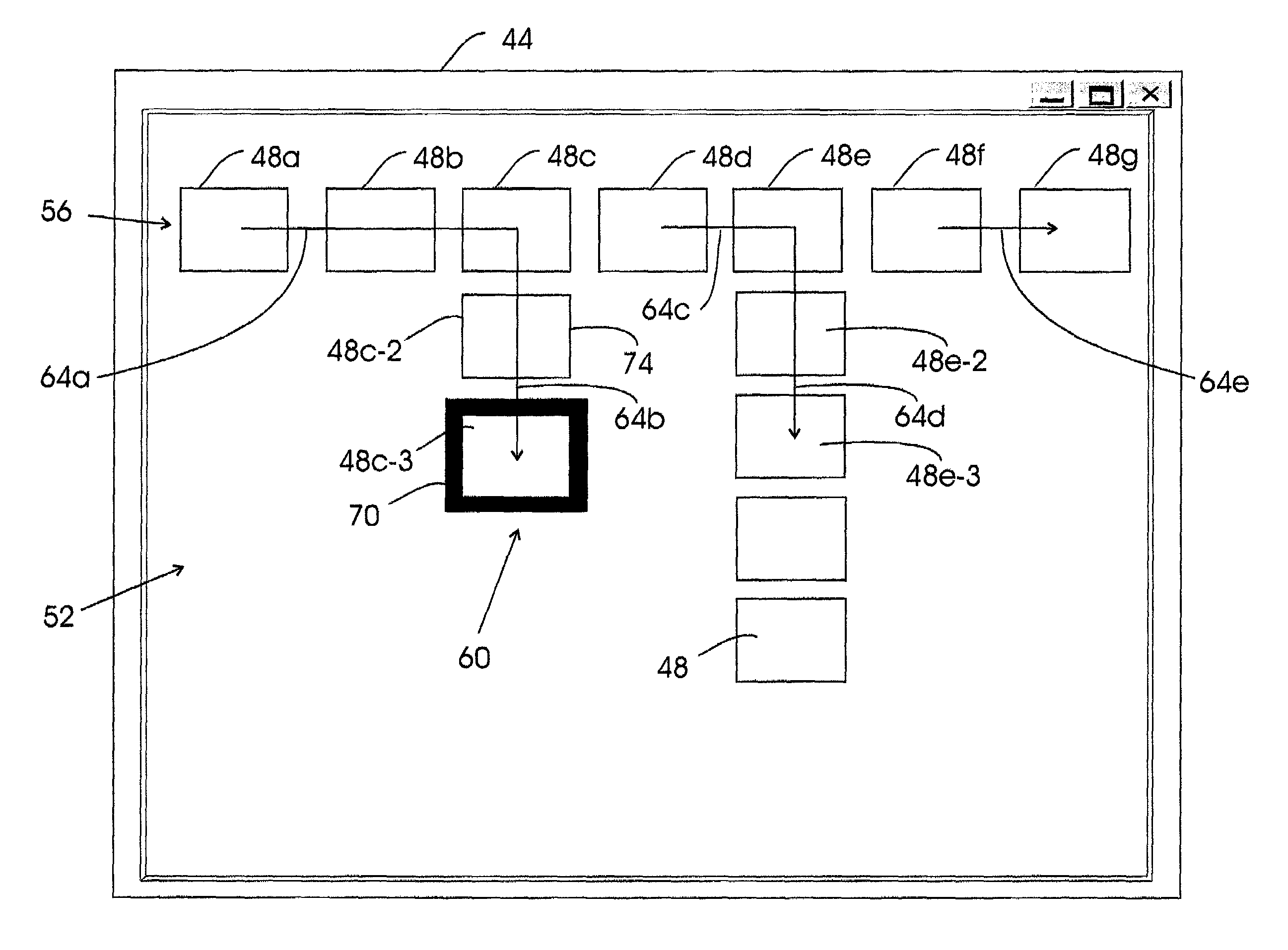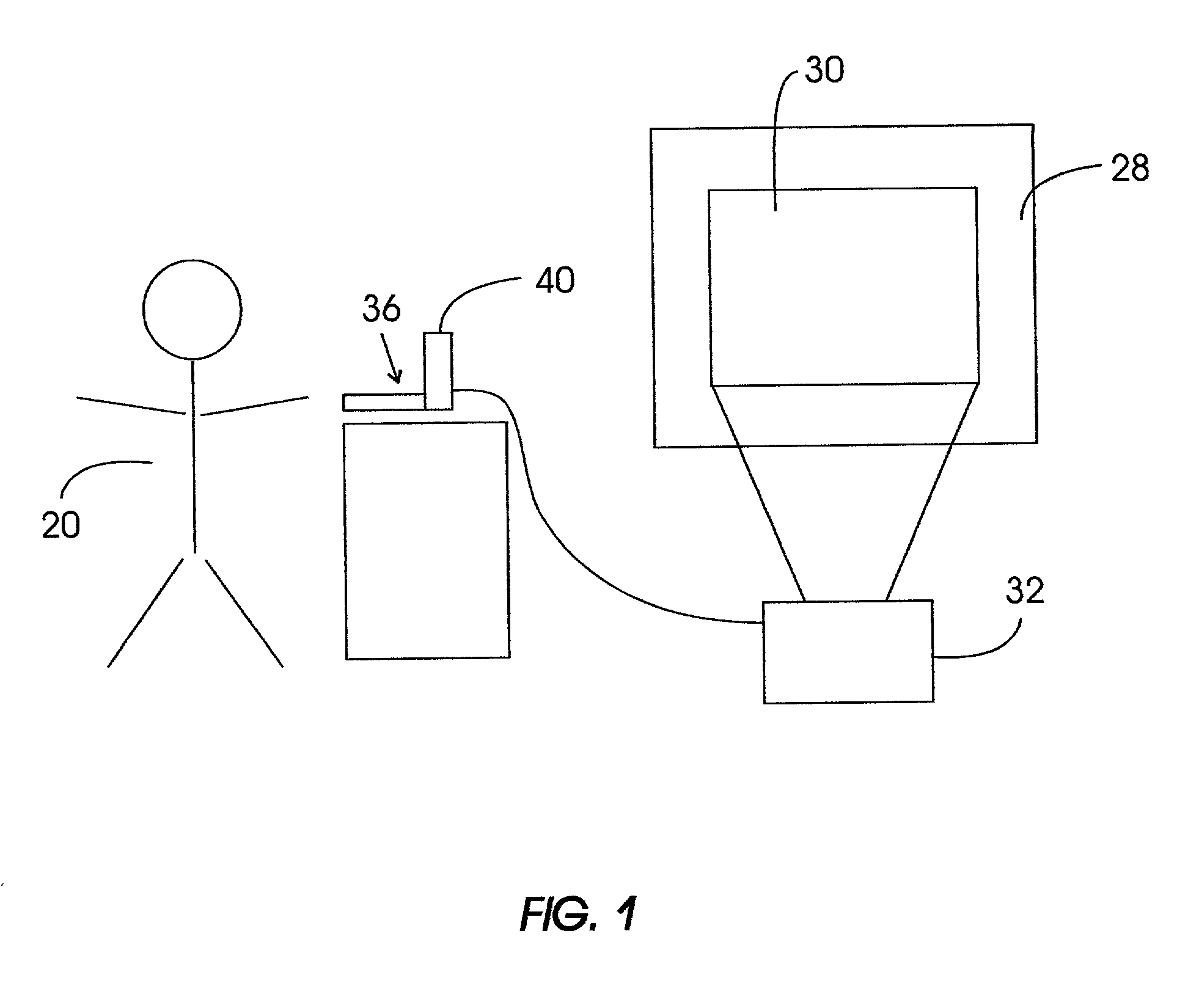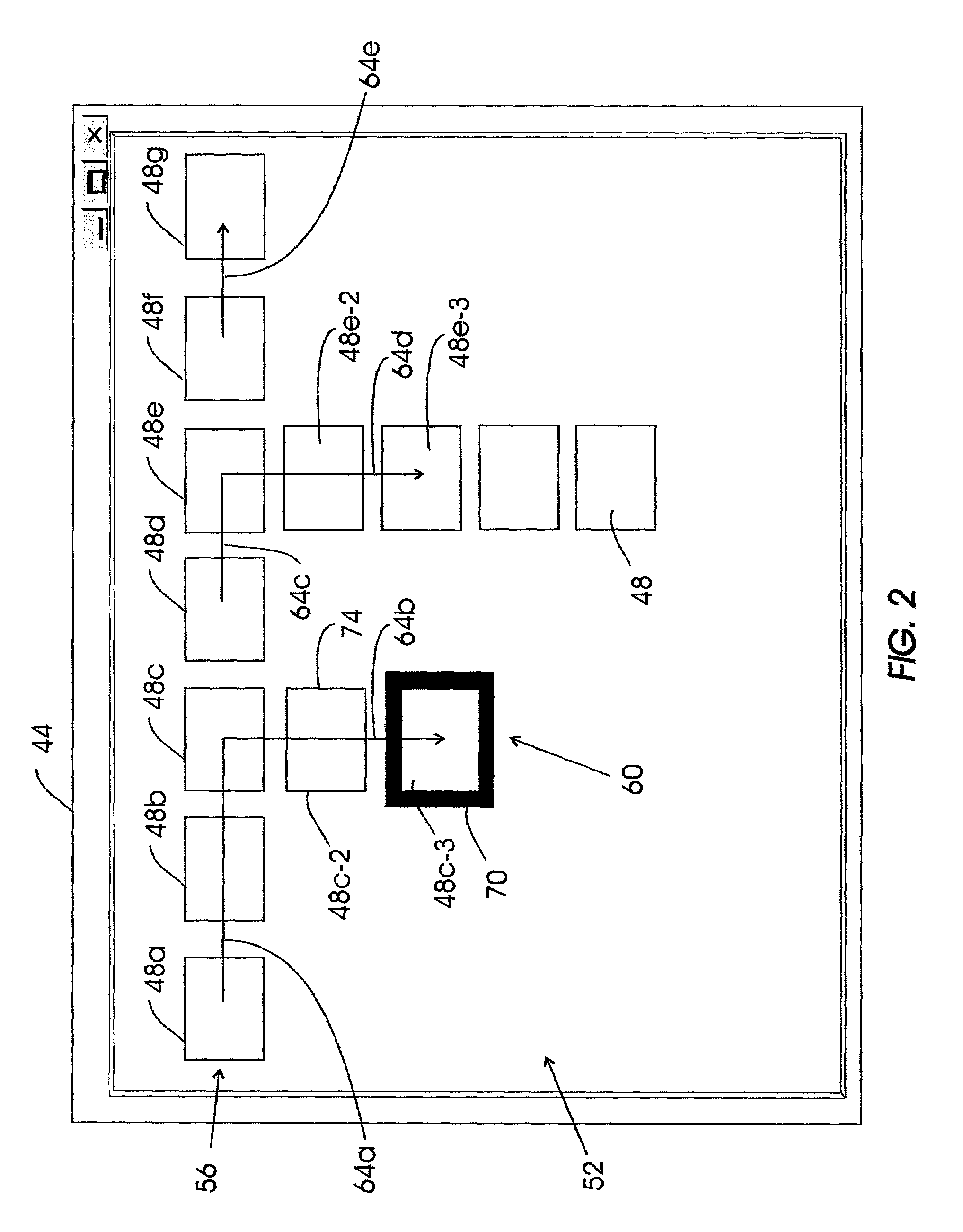Navigation method for visual presentations
a navigation method and visual presentation technology, applied in the field of visual presentation navigation method, can solve the problems of complex presentation complexity, inability to adapt to the standard thumbnail representation, and the complexity of some presentations beg for a departure, so as to facilitate navigation through the presentation, and facilitate the passage of time.
- Summary
- Abstract
- Description
- Claims
- Application Information
AI Technical Summary
Benefits of technology
Problems solved by technology
Method used
Image
Examples
Embodiment Construction
[0021]Preferred implementations of the invention give a presenter the ability to make spontaneous departures from a predetermined sequence of slides by providing the audience with additional detail as the situation arises. One such preferred implementation is shown in FIG. 1. A speaker or presenter 20 is making a presentation before an audience (which may or may not be in the same room as the presenter), whose attention is directed towards a screen 28 onto which an image 30 of a slide is displayed by a projector 32. The projector 32, which may be located either behind or in front of the screen 28, is electronically interfaced with (e.g., tied to) a lap top computer 36 (or other processor) where the presenter 20 selects which slide is projected onto the screen.
[0022]The computer 36 includes a monitor 40 whose screen 44 is shown in FIG. 2. The monitor screen 44 displays a number of representations of slides, e.g., as thumbnails 48. (Less preferably, a representation of a slide may be ...
PUM
 Login to View More
Login to View More Abstract
Description
Claims
Application Information
 Login to View More
Login to View More - R&D
- Intellectual Property
- Life Sciences
- Materials
- Tech Scout
- Unparalleled Data Quality
- Higher Quality Content
- 60% Fewer Hallucinations
Browse by: Latest US Patents, China's latest patents, Technical Efficacy Thesaurus, Application Domain, Technology Topic, Popular Technical Reports.
© 2025 PatSnap. All rights reserved.Legal|Privacy policy|Modern Slavery Act Transparency Statement|Sitemap|About US| Contact US: help@patsnap.com



